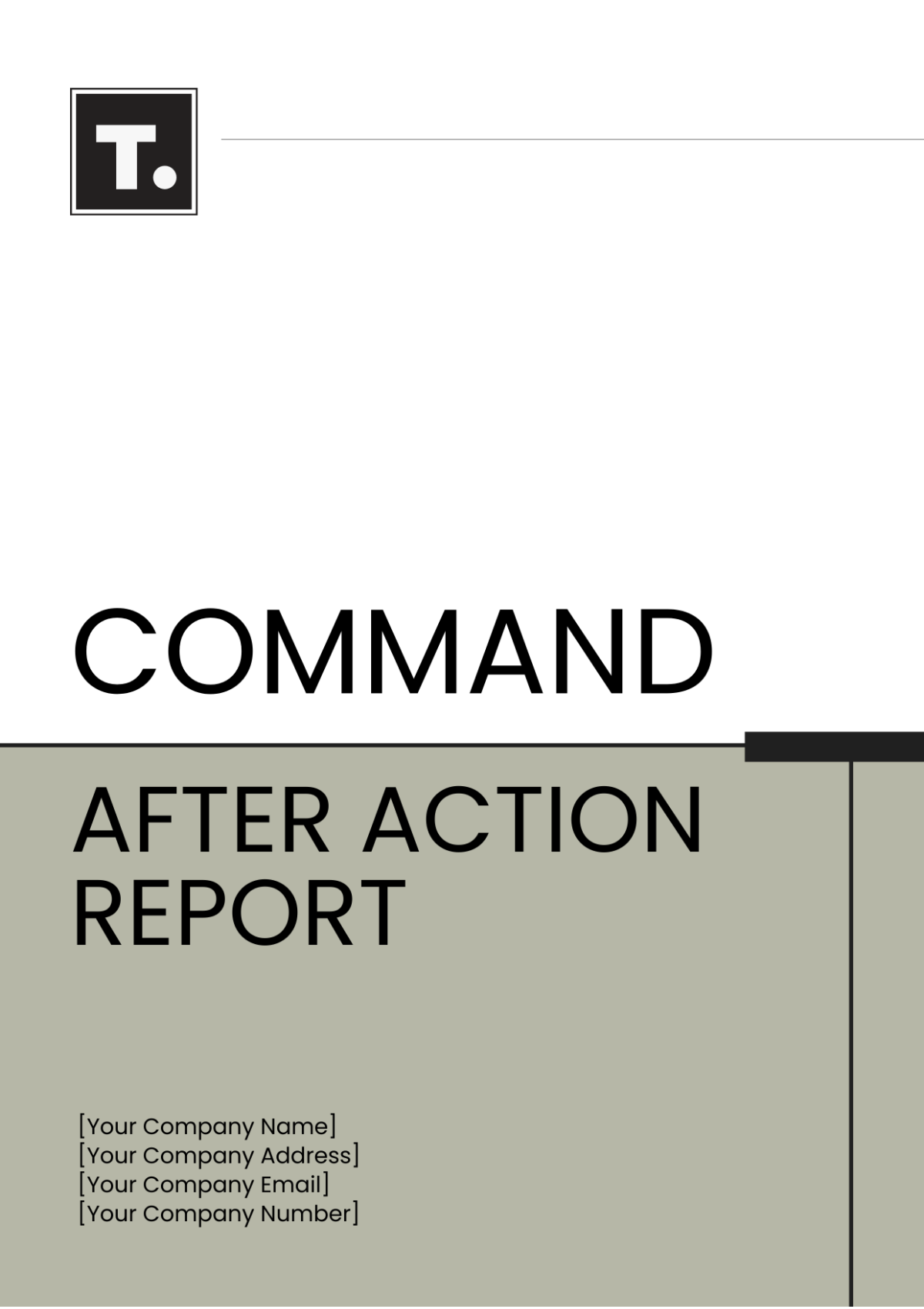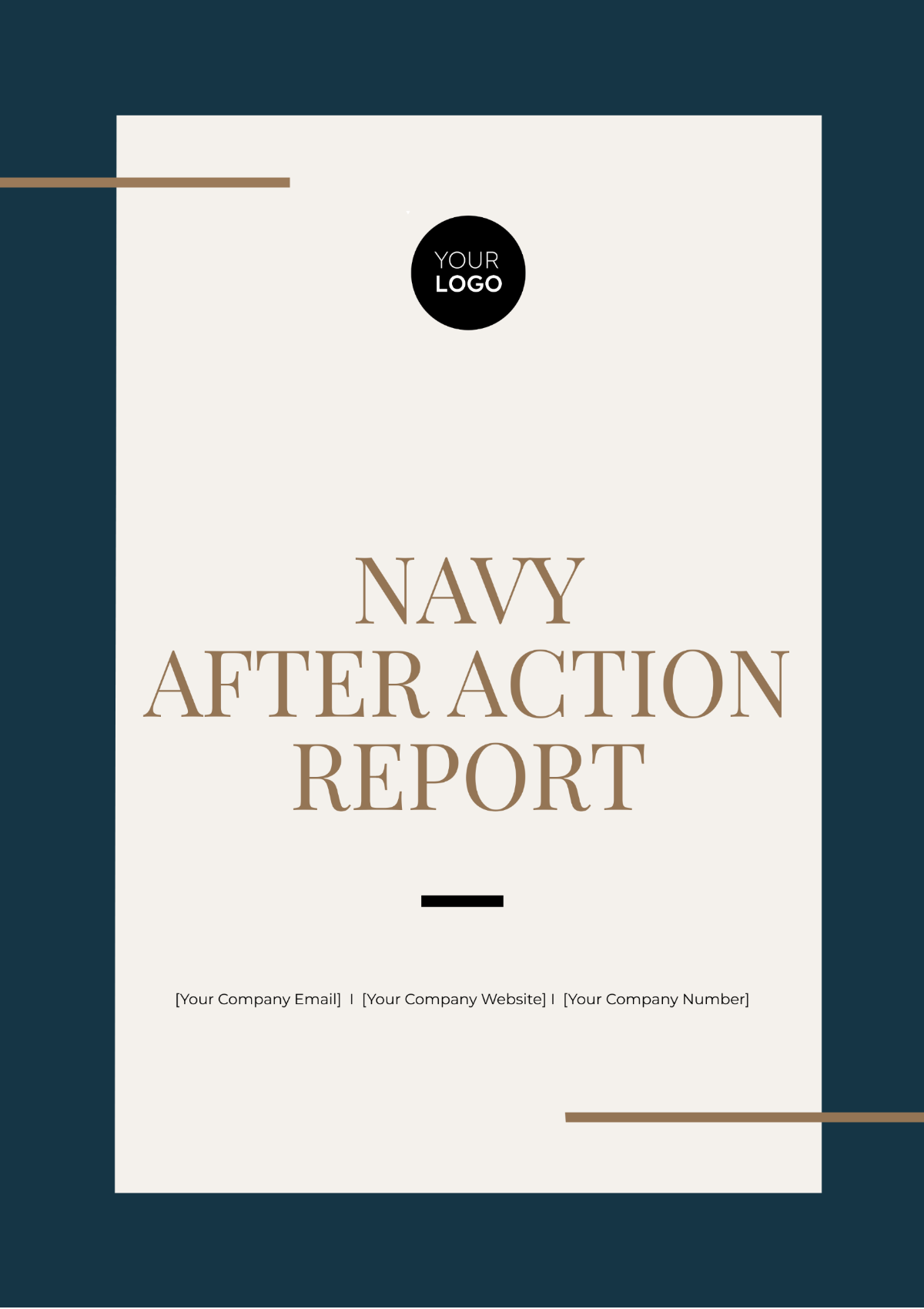Navy After Action Report
I. Introduction
In response to Operation Neptune's Trident, conducted by the USS Enterprise Strike Group on April 15-20, 2055, this After Action Report (AAR) provides a comprehensive analysis of the event's outcomes, lessons learned, and recommendations for future operations.
II. Executive Summary
The USS Enterprise Strike Group successfully executed Operation Neptune's Trident, which aimed to demonstrate naval power projection capabilities in the South China Sea. The primary objectives included validating rapid deployment readiness, conducting joint exercises with allied navies, and enhancing maritime security presence. Overall, the operation achieved all set objectives, contributing to regional stability and readiness.
III. Details of Operation
A. Mission Overview
Operation Neptune's Trident aimed to assert maritime dominance and reinforce alliances in the Indo-Pacific region. The operation involved USS Enterprise (CVN-80), USS Gonzalez (DDG-66), and USS Santa Fe (SSN-763), along with naval aviation squadrons and support vessels.
B. Execution
Concept of Operations
The initial plan focused on rapid deployment from Pearl Harbor Naval Base, followed by joint exercises with the Japanese Maritime Self-Defense Force and Australian Navy units. Flexibility in response to emerging threats in the area was a key element.
Actions Taken
During the operation, the USS Enterprise conducted multiple flight operations, including F/A-18 Super Hornet sorties and E-2D Hawkeye surveillance flights. USS Gonzalez and USS Santa Fe conducted anti-submarine warfare exercises and participated in coordinated surface operations.
C. Results Achieved
Accomplishments
Successfully demonstrated rapid deployment capability within 48 hours.
Conducted 50+ sorties from USS Enterprise, maintaining air superiority.
Strengthened interoperability with allied forces through joint exercises.
Challenges
Logistical challenges in replenishing aviation fuel during high-tempo flight operations.
Weather disruptions affected planned training schedules.
Communication interoperability issues with allied navies.
Lessons Learned
Importance of pre-positioning logistics assets in potential operational areas.
Enhanced coordination protocols for joint exercises with international partners.
Continued focus on improving communication systems interoperability.
IV. Analysis and Recommendations
A. Analysis
Operational Effectiveness
The operation was highly effective in achieving its objectives of showcasing naval capabilities and strengthening regional partnerships. However, logistical and communication challenges highlighted areas for improvement.
Performance Evaluation
Overall, the USS Enterprise Strike Group demonstrated exceptional performance in air and sea operations. Personnel readiness and equipment reliability were commendable.
B. Recommendations
Tactical Adjustments
Implement advanced logistics planning to mitigate fuel supply disruptions.
Enhance joint communication protocols to improve interoperability with allied navies.
Training Enhancements
Increase joint training exercises with regional allies to foster seamless integration.
Conduct regular simulation drills to prepare for adverse weather conditions.
C. Equipment and Logistics Assessment
Equipment Effectiveness
Evaluate E-2D Hawkeye performance in challenging weather conditions.
Review replenishment at sea (RAS) procedures to optimize fuel transfer efficiency.
Logistics Evaluation
Assess the effectiveness of current logistics support ships in sustaining high-tempo operations.
Improve coordination between logistics and operational units for smoother mission execution.
V. After Action Review Process
A. Review Methodology
The AAR was conducted through structured debriefings with commanding officers, operational unit leaders, and participating personnel. Data sources included mission logs, after-action surveys, and feedback from allied counterparts.
B. Stakeholder Feedback
Stakeholder feedback highlighted the positive impact of joint exercises on alliance cohesion and operational readiness. Recommendations for future operations emphasized the importance of sustained engagement and enhanced interoperability.
VI. Conclusion
This AAR concludes that Operation Neptune's Trident was successful in achieving its objectives of demonstrating naval capabilities and strengthening regional alliances. The insights gained from this operation will inform future Navy strategies, ensuring continued readiness and effective deterrence in the Indo-Pacific region.
Contact Information:
Name: [YOUR NAME]
Email: [YOUR EMAIL]
Company: [YOUR COMPANY NAME]
Phone Number: [YOUR COMPANY NUMBER]
Address: [YOUR COMPANY ADDRESS]
Website: [YOUR COMPANY WEBSITE]
























